
Printing note: This design was created to be 8.5″ x 14″ and the design pdf will print best on legal size paper.
Overview
Front Range Colorado gardening is unique thanks to a cold and dry climate, and we have always had to do things differently: planting, sourcing, and care, so the design offers guidance to landscape professionals and DIY homeowners. Thus, the design is heavy with the how-to in addition to the what of a native garden design.
This design features a broad variety of food sources, nesting materials, and hideaways for Colorado insects and wildlife. It promotes a zero-waste design system, in which no (carbon-rich) organic material is hauled away, but is instead used to resist weeds while improving soil, plant, and critter health.
The front yard proves that a landscape can be unirrigated, enjoying fewer weeds and pruning as a result. The design includes a cost-saving option of using mail-ordered seed as an alternative to sourcing plants for the front and back areas. Seed mixes create dynamic, wilder, and more adaptable garden situations that are actually much more drought resilient. The second optional feature is a crevice garden. Crevice gardens provide excellent surface drainage for plants from drier places (the desert) while trapping water below for deep roots to find.
LAYOUT
The different spaces honor the varied natural Colorado landscapes and use plants which fit the microclimates that form around homes in urban settings and the soil conditions that will develop with the specified mulch and planting techniques.
The front yard evokes the atmosphere of Colorado’s arid and rocky places. It is designed to be unwatered or irrigated optionally, employing passive rainwater-trapping. The featured plants are given space in line with native vegetation coverage based on rainfall and are appropriate for a hotter streetside microclimate. Colorful, re-blooming species add curb appeal. Nonflammable foundation plants are a nod to Coloradans who live in danger of increasingly prevalent wildfires. The front yard design provides space for an optional crevice garden.
Crevice gardens create an under-provided urban habitat for snakes, lizards, and even butterflies to warm themselves on the rocks. Many burrowing bees, ants, and beneficial wasps relish the warm, dry soil between and under the stones.
The denser, cooler back yard calls to mind our state’s forests, thickets, meadows, and shortgrass prairie with a native Buffalo Grass lawn. It is watered infrequently and deeply, and provides a buffet of pollinator and larval host plants as well as a refuge, restaurant, and water-stop for birds. Optionally, additional flowers can be planted in the low traffic parts of the lawn.
PLANTS
Plants were selected for a variety of features: ruggedness, nativity, service to wildlife, reasonability to maintain, non-aggression in a garden, seasonality, and multi-use. Specified plants are native to Colorado in most cases. For the Colorado gardeners for whom native plant availability is truly dismal, more easily sourced regional/ US native alternatives are provided. A few excellent but lesser available species are intentionally included (with alternatives provided) in the spirit of supporting growers who take the risk producing them, and to gently encourage those who don’t. These plants are at home in virtually any soil type in the 4500-7000’ altitude range, and most will stretch beyond that.
PLANT LISTS
(Alt = alternative/substitution species)
Front Yard & Sides
Trees
- #1 Scrub Oak, Quercus gambelii x1
(Alt: Sapindus drummondii, Celtis reticulata, Cercis canadensis, or Cupressus arizonica)
Shrubs
- #2 Mormon Tea, Ephedra viridis x1
- #3 Beargrass, Nolina greenei aka Nolina texana (Ackerfield) x1 (note: zone 5b) (Alt: Nolina microcarpa, or small Yucca sp)
- #4 Baby Rabbitbrush, Ericameria nauseosa ssp nauseosa x8
- #5 Apache Plume, Fallugia paradoxa x1
- #6 Fernbush, Chamaebatiaria millefolium x1
- #7 Soapweed, Yucca glauca x1 (Alt Y. baccata, Y. harrimaniae, elata, angustissima, neomexicana but not flaccida nor filamentosa.)
- #43 Threeleaf Sumac, Rhus trilobata x1
Grasses
- #8 Alkali dropseed, Sporobolus airoides x21 (Alt: Bouteloua curtipendula)
- #9 Blue Grama, Bouteloua gracilis x15
Perennials
- #10 Desert Bluestar, Amsonia jonesii x1
- #11 Heath Aster, Symphyotrichum (Aster) falcatum x3 (Alt: S. ericoides)
- #12 Prairie Zinnia, Zinnia grandiflora x4
- #13 Blanketflower, Gaillardia aristata x3
- #14 Desert Four-O-Clock, Mirabilis multiflora x1
- #15 Sunshine Daisy, Tetraneuris (Hymenoxys) scaposa x3
- #16 Beardtongues, Penstemon secundiflorus, versicolor x4 (Alt: Penstemon strictus)
- #17 Chocolate Daisy, Berlandiera lyrata x5
- #18 Prairie Coneflower, Ratibida columnifera x3 (Alt: Ratibida Columnaris var. pulcherrima)
- #19 Spotted Gayfeather, Liatris punctata x6 (Alt: L. ligulistylis)
- #20 Purple Prairie Clover, Dalea purpurea x2
- #21 Firecracker Penstemon, Penstemon eatonii x7 (Alt: P. barbatus)
- #22 Prickly Pear Cactus,Opuntia phaeacantha x1 (Alt: O. erinacea, aurea, etc.)
- #46 Crevice Garden
Back Yard
Trees
- #23 Netleaf Hackberry, Celtis reticulata x1 (Alt: Cercocarpus ledifolius, Cercis canadensis, Chilopsis
linearis)
Shrubs
- #24 Golden Currant, Ribes aureum x1
- #25 Rocky Mountain. Juniper, Juniperus scopulorum x1 (Alt: Cupressus arizonica, smaller J. monosperma)
- #26 Leadplant, Amorpha canescens x1
- #27 Manzanita, Arctostaphylos x coloradoensis x1
- #28 Utah Serviceberry, Amelanchier utahensis x1 (Alt: larger A. alnifolia)
Grasses
- #29 Switchgrass, Panicum virgatum x14
- #30 Little Bluestem, Schizachyrium scoparium x10
Perennials
- #31 Missouri Evening Primrose, Oenothera macrocarpa (O. missouriensis) x1
- #32 Wright’s Buckwheat, Eriogonum wrightii x4 (Alt: E. jamesii)
- #33 Butterfly Weed, Asclepias tuberosa x4
- #34 Blue Flax, Linum lewisii x5
- #35 Blanketflower, Gaillardia aristata x8
- #36 Anise Hyssop, Agastache foeniculum x3
- #37 Smooth White Aster, Symphyotrichum porteri, x5 (Alt: S. leavis)
- #38 Prairie Ironweed, Vernonia fasciculata x3
- #39 Winecups, Callirhoe involucrata x2
- #40 Purple Coneflower, Echinacea angustifolia x11 (Alt: E. pallida)
- #41 Stiff Goldenrod, Solidago rigida x2
- #42 Wild Bergamot, Monarda fistulosa x5 (Alt: M. punctata)
- #44 Bird Bath
- #45 Pasqueflower, Pulsatilla patens x5
- #46 Prairie Junegrass, Koeleria macrantha x10
Optional Seed Mixes
Front yard plants/seed mix
Indian Ricegrass, Achnatherum hymenoides
Firecracker Penstemon, Penstemon eatonii
Blanketflower, Gaillardia aristata
Blue Flax, Linum lewisii
Chocolate Daisy, Berlandiera lyrata
Paintbrush, Castilleja integra
Dotted Gayfeather, Liatris punctata
Purple Prairie Clover, Dalea purpurea
Desert Marigold, Baileya multiradiata
Rocky Mountain Beeplant, Cleome or Peritoma serrulata
P Monro’s Globemallow, Sphaeralcea munroana
Prairie Coneflower, Ratibida columnifera
Backyard plants/seed mix
Hoary Vervain, Verbena stricta
Englemann’s Daisy, Englemannia peristenia
Blue Flax, Linum lewisii
Butterfly Weed, Asclepias tuberosa
Gayfeathers, Liatris punctata or L.ligulistylis
Blanketflower, Gaillardia aristata
Narrow-Leaved Purple Coneflower, Echinacea angustifolia (Alt: Pale Purple Coneflower E. pallida)
Purple Prairie Clover, Dalea purpurea
Rocky Mountain Penstemon, Penstemon strictus
Prairie Coneflower, Ratibida columnifera
Anise Hyssop, Agastache foeniculum
Winecups, Callirhoe involucrata
Plants for the Crevice Garden
Claret Cup Cactus, Echinocereus coccineus x3 (Alt: E. triglochidiatus var.mojavensis, which is Colorado’s
state cactus)
Sunshine daisy, Hymenoxys acaulis var. caespitosa or other sp. x4
Dwarf Snowball Cacti, Escobaria sneedii x1-5
Ovalleaf Buckwheat, Eriogonum ovalifolium x1
Hooker’s Sandwort, Arenaria hookeri x3
Hooker’s Townsend Daisy, Townsendia hookeri x2
Desert Evening Primrose, Oenothera caespitosa x1
Optional Additional Seeds/Plants to Plant in Buffalo Grass
Fringed Sage, Artemisia frigida
Prairie Junegrass, Koeleria macrantha
Prairie Zinnia, Zinnia grandiflora
Spotted Gayfeather, Liatris punctata
Purple Prairie Clover, Dalea purpurea
Blue Grama, Bouteloua gracilis
Paintbrush, Castilleja integra
Scarlet Globemallow, Sphaeralcea coccinea
Installation Phases
Installation can be broken into manageable pieces- front and back, one at a time, and each of those can be split further if needed by dividing them by mulch zone. Generally, demolition/removal is first, mulch, then plant, then seed. The gravel garden area in front can serve as a placeholder before a crevice garden is built, or if one is not built at all.
Demolition & Soil
New homes typically have poor, compacted soil and will benefit from adding a thin (1/4-1/2”) layer of compost or a generous sprinkle of alfalfa meal on the soil, then worked it in. Rototilling should be avoided in favor of loosening
by hand with a turning fork, broad fork, or by “ripping” the soil 4-10” deep with a “scarifier” on a skid-steer. Soils around older homes will usually have sufficient nutrition and not need additional compost. If replacing a well-established lawn, usually no soil amendment is necessary.
Soil grades should be carved out along sidewalks, drives, and paths to make room for those future several inches of mulch so that your mulch does not migrate or spill onto them. The following links outline preparing sites for native planting and removing lawns:
The difference between annual or perennial weeds is useful to know. Annual weeds are not too serious- they are easily removed and future mulch and plants will prevent them from returning. Perennial and deeprooted weeds (such as thistle, bindweed, wheatgrass, white top) are the ones to be diligent in removing as much as possible before planting.
Rototilling and adding excessive organic material often encourages more growth of problematic weeds. At a stage when there is bare soil, it’s a good time to consider earth works to passively trap rainwater to supplement the unirrigated front yard, as well as help trap pollutants before they enter streams and rivers.
Mulch
A top-dressing material reduces weeds, conserves water, and improves the soil. In this design there are two types of mulch appropriate to their different plant communities, maintenance, and microclimate.
Wood-chip mulch (brown/tan in drawing) is laid 2-4” deep. This may be sourced free from municipalities and tree-trimming companies. If there are
perennial weeds, start by covering the ground with tape-free and uncoated cardboard to block them, overlapping edges by 1”, then cover with a full 4” of wood chips. This temporary weed barrier of cardboard blocks weeds and holds moisture until plants get established, and then breaks down in about a year after it has served its purpose.
Gravel mulch (gray in drawing) should be laid 1-4” thick and be 1/2” or 3/8” size, crushed (sharp) gravel. Avoid rounded pea gravel which can roll on to sidewalks and pose a danger to pedestrians. A bucket or two of coarser 1” screen gravel scattered on top can help pin down the finer gravel where it is near sidewalks or on slopes, or gravel can be contained with edging. Scattering larger gravels also helps you create a more random, naturalistic surface that looks less like a parking lot! The base layer of 1/2” size can be dug, hoed, and weeded easily. If you want a thin gravel mulch to encourage future flowers but not weed seeds in the ground, lay two layers of overlapping newspaper, under the gravel as an organic temporary weed barrier. One cubic yard of gravel will cover about 300 square feet one-inch thick. Thinner
depths of gravel (1-2”) encourage seedlings of both your plants and weeds. 4” can entirely exclude seedlings, 3” is sane. If you can, leave occasional areas of naked, unirrigated soil, perhaps hidden behind taller plants or on the back of the crevice garden. Bare soil will welcome solitary, usually ephemeral and shy, ground-nesting bees.
Planting
Spring and autumn are the best times to plant. Summer is possible, but tricky. The practice of bare-root planting leads to faster establishment, healthier, more resilient and more long-lived plants, and is especially effective in arid climates like ours. New plants are bare-rooted by dunking them in a bucket of water and gently teasing the roots to remove at least 2/3 of the spongy nursery mix.
Dig a hole as deep as the roots. Put the bare-rooted plant in the hole, fan the roots out and backfill the hole halfway to support the plant. Make sure the crown of the plant is the same soil depth it was in the pot. Add water to the hole creating mud that will flow into the roots. Add soil to fill the rest of the hole leaving a temporary dirt basin shaped like a donut. This basin traps water near the young plant. Replace gravel around the plant. If using wood mulch keep it off the base and stem of the plant.
New plants need a weekly soaking until they are visibly larger, after which frequency can be reduced by half. If planting in summer and the temperature is over 75 F, plants need shade for two weeks and must be watered at least 2 times a week. Water duration is dependent on what type of irrigation device used. Individual plants need 5-10 seconds with an open hose; whole landscapes need 60 minutes with an impact sprinkler or 15 minutes with popup sprayers. The best way to sense if the duration is appropriate is to check the soil moisture before and after its watered; the soil should be soaked at least 4” deep immediately after watering.
Optional Seeding
When planting seeds, seed will need soil or no more than 1” of gravel on top of them. Perennial wildflower seed is best sown in fall between October and January 1, as most species need to experience winter to germinate in spring. Seed may be eaten by eager birds like Juncos, so to compensate, seed can be sown 50% heavier and/or protected by tamping, watering it in, or mulching with a 1/4”-1/2” of straw (not hay), which makes a good temporary mulch, too. The seedbed should be kept moist until plants are 4-6” tall, after which they can be weaned from water. Weeds that pop up among them will have to be identified and cut out. With perennials, there will be few flowers the first year, and a real show the second year.
Seed-grown plants are always more resilient, better performing, and longer lived than a container-grown and planted counterpart. A wildflower mix from seed will be dynamic; it should be expected to change over time as species come and go, and the most well-adapted plants stay.
Native grasses can serve as a long-term turf that is resilient to foot traffic and wear. Buffalo Grass seed is preferable to grass plugs. These grass seeds has diverse genetics and both female and male flowering plants which are useful to humble pollinators. It can be sown onto naked, raked soil between June through September, then tamped and covered with a thin mulch of straw.
- Buffalo Grass
Crevice Garden
This bold style of rock garden approximates rocky places by being purpose-built to create narrow gaps between stones where special plants thrive, creating a dry surface and trapping moisture deeper below, and forcing roots deeper.
A crevice garden can be made of stone, recycled concrete, or other recycled materials. It can use big lumpy rocks or slab-like thinner stones- any kind, truly. Bury the rocks at least half their height into the soil and use enough that they “pave” at least half of the visible soil surface. Cover the soil in the resulting crevices with 1” deep gravel. Built too tall and it will become too dry for most plants, so a humble height of 1/3 or 1/4 the width is good in dry climates. It can also be made jagged to catch the rain rather than built smoothly to shed it. Crevice gardens are a personal art form; a person can play with stone noncommittally for a while first to get a feel for what they want to make.
Maintenance
Weeding
Weeds will decrease over time as soil becomes less disturbed and flowers mature. A Buffalo Grass lawn planted without cool-season grass, other plants, or bulbs within it will need defense from winter-growing weeds like dandelions; corn gluten can be used as an organic pre-emergent. Annual weeds are weak and unthreatening contenders against any sharp tool, but perennial weeds are persistent adversaries if they are not smitten early and before the garden is planted. A hoop hoe is ideal for unwanted weed or flower seedlings in your gravel and is no more difficult than pushing a vacuum. White vinegar with a partial drop of soap or surfactant is a strong “defoliant” type of organic herbicide for weeds especially in concrete cracks; it shouldn’t be overused or allowed to hit flowers with friendly fire.
Mowing
Buffalo Grass can be kept as a weekly-mown turf, but it will need more regular water and be much less resistant to weeds. It provides better habitat and requires less work if mown just once a year for cleanliness, in late spring just as it begins to green up. Many people use a trimmer to avoid owning a mower for this once-yearly task!
Watering
Existing lawn sprinklers are a great way to establish a new garden. Without a sprinkler system, new plantings can be hand-watered or irrigated with a cheap, temporary hardware-store drip system (or one with impact sprinklers on stakes) controlled by a battery-operated timer. Morning is the ideal time to water, but this is not critical.
The unirrigated front yard can be enjoyed as such, but you should be ready to water in an extreme drought year once or twice to keep plants healthy. New plants need a soaking every 1-2 weeks their first year in the ground. If uncertain about soil moisture, determine if plants need water by digging a tiny bit and feeling the soil. The bird bath water can be freshened up when the hose is nearby.
Water the back yard using overhead irrigation via impact sprinklers or pop-up rotors in the lawn. Avoid using basic spray nozzles that make a mist that will blow away on the wind or evaporate. Aim to deeply water once every 2 weeks. Note that most irrigation control boxes are limited to weekly watering. This landscape does not need or want more than a weekly watering excessive watering will rot plants, increase weeds and cause unhealthy overgrowth of your flowers!
The back yard can be watered between once every two weeks to a deep soaking each month from May to September. More than once a week is never, ever necessary. The first defense against weeds is controlling water. Native trees won’t need winter watering, especially when well mulched.
Cleanup & Trimming
Flowers should not be deadheaded; seed-heads become silhouettes against snow and provide winter forage for birds: those Juncos get a reward for their patience. Perennials which die to the ground should be left standing through
the winter and cut back in spring just as they begin to grow.
The wood chipped areas can be used as the receptacle for all yard waste. Utilize the “chop and drop” method which will replenish the mulch naturally, and forever; cut stems into small sections (2”- 8” long pieces will lay flat and blend in). New gardens will be slower to break this material down in the beginning, but by the second and third year landscapes will start to see a healthy soil flora develop that will remarkably and consistently consume all yard waste. Some homeowners may enjoy using power mulchers (now available as quieter electrics) to break down tree leaves or chop this trimmed material into a neat, uniform consistency and return it to the beds where it will be quickly hidden by established plants.
What may seem like more work actually prevents a chain-reaction of onerous tasks including bagging trash, and the fossil-fueled transport and disposal of that trash. The goal is to avoid any green “waste” being lost to the landfill. The dry grass in mulch will be especially prized by birds building nests, and towhees are born to scrounge for dinner in the leaf-litter. In contrast, gravel areas should be swept, raked or blown clean to preserve a leaner soil for plants that prefer it; those wastes can simply be swept and mulched into the nearby wood chip areas.
The difference between “yard work” and “gardening” is attitude; and gardening is a joy amidst a labor-saving, wildlife-serving, dynamic living community of plants.
Where to Buy Colorado Native Plants
Retail
Agua Fria Nursery, Santa Fe
Chelsea Nursery, Grand Junction
Fort Collins Nursery, Fort Collins
Gulley’s, Fort Collins
Harlequin’s Gardens, Boulder
Phelan Gardens, Colorado Springs
Plants of the Southwest, Santa Fe
Urban Roots, Denver @ City Park Farmers Market
Seasonal Plant Sales
Colorado Native Plant Society
Denver Botanic Gardens
High Plains Environmental Center, Loveland
Online/Mail-Order
ColdHardyCactus.com
HighCountryGardens.com
PrairieMoon.com
PrairieNursery.com
SouthwestSeed.com
Sunscapes.net
WaterwiseGardening.com
WesternNativeSeed.com
GraniteSeed.com
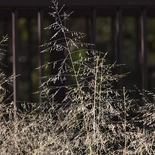
Alkali dropseed(Sporobolus airoides)
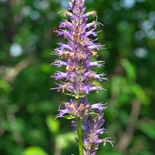
Anise Hyssop(Agastache foeniculum)

Apache Plume(Fallugia paradoxa)
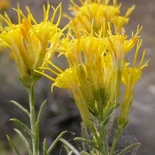
Baby Rabbitbrush(Ericameria nauseosa)
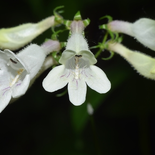
Beardtongue(Penstemon digitalis)
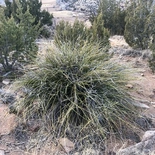
Beargrass(Nolina greenei)
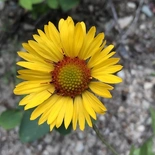
Blanket Flower(Gaillardia aristata)

Blue Flax(Linum lewisii)

Blue Grama(Bouteloua gracilis)
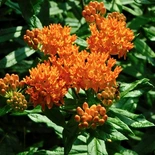
Butterfly Weed(Asclepias tuberosa)

Chocolate Daisy(Berlandiera lyrata)
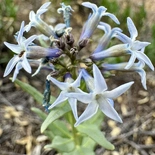
Desert Bluestar(Amsonia jonesii)

Desert Four-o-clock(Mirabilis multiflora)
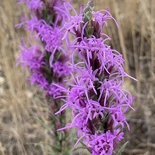
Dotted Blazing Star(Liatris punctata)
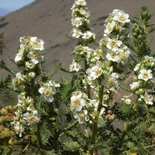
Fernbush(Chamaebatiaria millefolium)
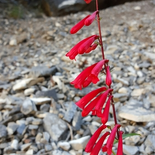
Firecracker Penstemon(Penstemon eatonii)
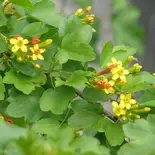
Golden Clove Currant(Ribes aureum)

Heath Aster(Symphyotrichum falcatus)

Leadplant(Amorpha canescens)
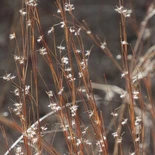
Little Bluestem Grass(Schizachyrium scoparium)

Manzanita(Arctostaphylos x coloradoensis)

Missouri Evening Primrose(Oenothera macrocarpa)
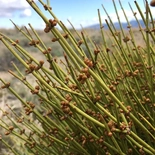
Mormon Tea(Ephedra viridis)

Netleaf Hackberry(Celtis reticulata)

Pasqueflower(Pulsatilla patens)
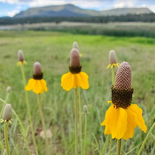
Prairie Coneflower(Ratibida columnifera)

Prairie Ironweed(Vernonia fasciculata)
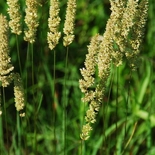
Prairie Junegrass(Koeleria macrantha)

Prairie Zinnia(Zinnia grandiflora)

Prickly Pear Cactus(Opuntia humifusa)

Purple Coneflower(Echinacea purpurea)

Purple Prairie Clover(Dalea purpurea)
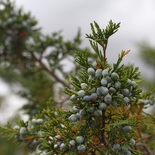
Rocky Mountain Juniper(Juniperus scopulorum)

Scrub Oak(Quercus gambelii)

Smooth Aster(Symphyotrichum laeve)
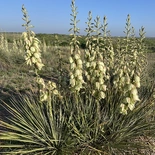
Soapweed(Yucca glauca)

Stiff Goldenrod(Oligoneuron rigidum)
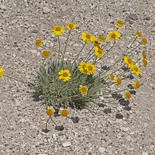
Sunshine Daisy(Tetraneuris scaposa)

Switchgrass(Panicum virgatum)
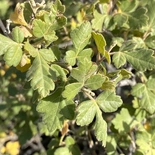
Threeleaf Sumac(Rhus trilobata)
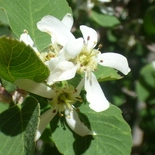
Utah Serviceberry(Amelanchier utahensis)
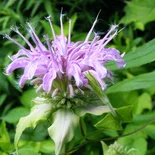
Wild Bergamot(Monarda fistulosa)
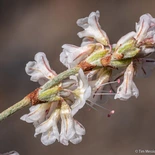
Wright's Buckwheat(Eriogonum wrightii)
About the Designer

Watching his beloved desert become drier and seeing the Colorado River in his hometown flow weaker is what ensnared Kenton Seth to a lifetime committed to sustainable garden design. This goal led him to specialize in the hitherto esoteric worlds of unwatered gardens and crevice gardens; both concepts are optionally featured in the design. Unwatered gardens embrace a future of population growth and water scarcity in the American west, while Crevice Gardens evoke the spirit of the Rockies and host plants and animals that prefer life among rocks. He has authored a book out in June 2022 on crevice gardening.
Growing the Native Plant Movement Together
July 22nd at 5:00 PM (CDT)
The closing event of this year’s Less Lawn More Life Challenge, will be led by Lisa Olsen, Chapter Liaison at Wild Ones. In this webinar, you’ll learn how small, personal actions like planting native species and removing invasives, can ripple outward to inspire neighbors, change policies, and reshape communities.
About Wild Ones
Wild Ones (a 501(c)(3) nonprofit organization) is a knowledgeable, hands-on, and supportive community focused on native plants and the ecosystem that depends on them. We provide resources and online learning opportunities with respected experts like Wild Ones Honorary Directors Doug Tallamy, Neil Diboll, and Larry Weaner, publishing an award-winning journal, and awarding Lorrie Otto Seeds for Education Program grants to engage youth in caring for native gardens.
Wild Ones depends on membership dues, donations and gifts from individuals like you to carry out our mission of connecting people and native plants for a healthy planet.
Looking for more native gardening inspiration? Take a peek at what our members are growing!
